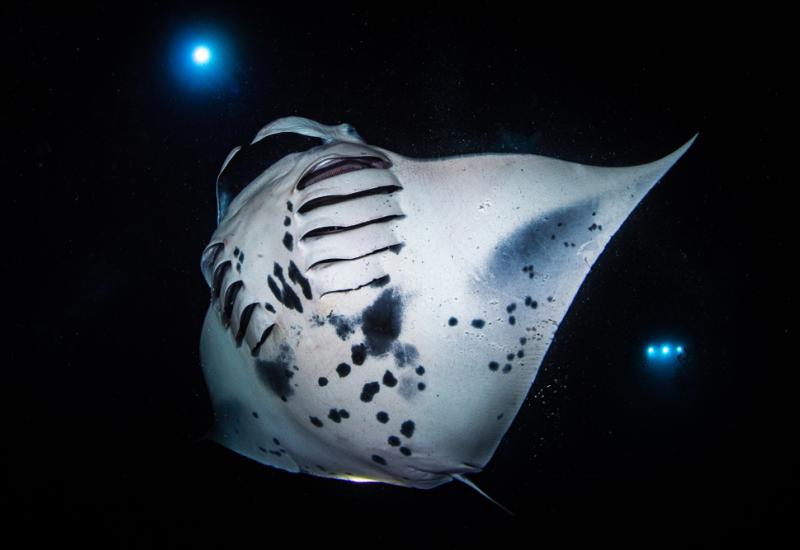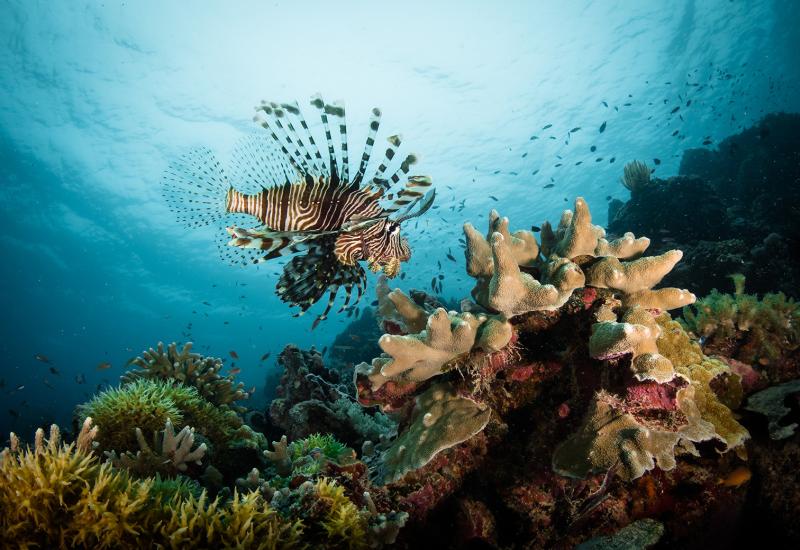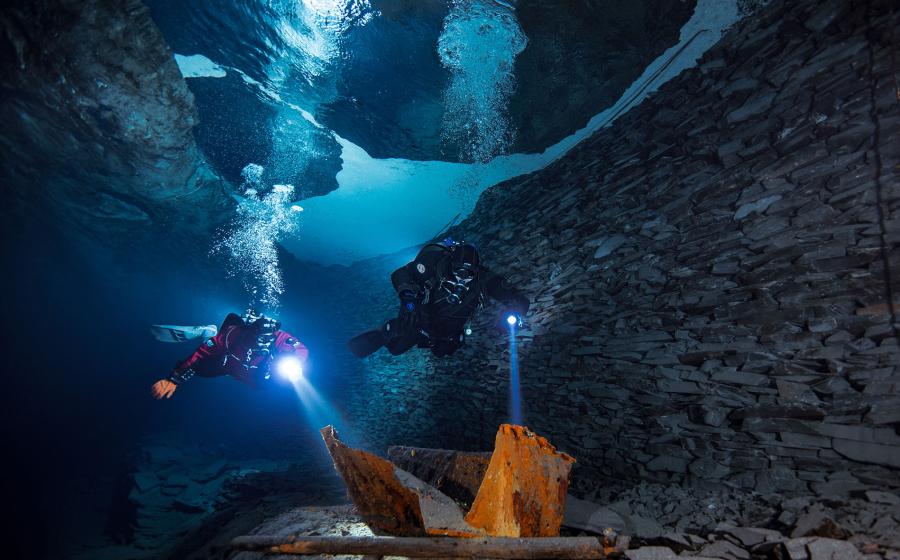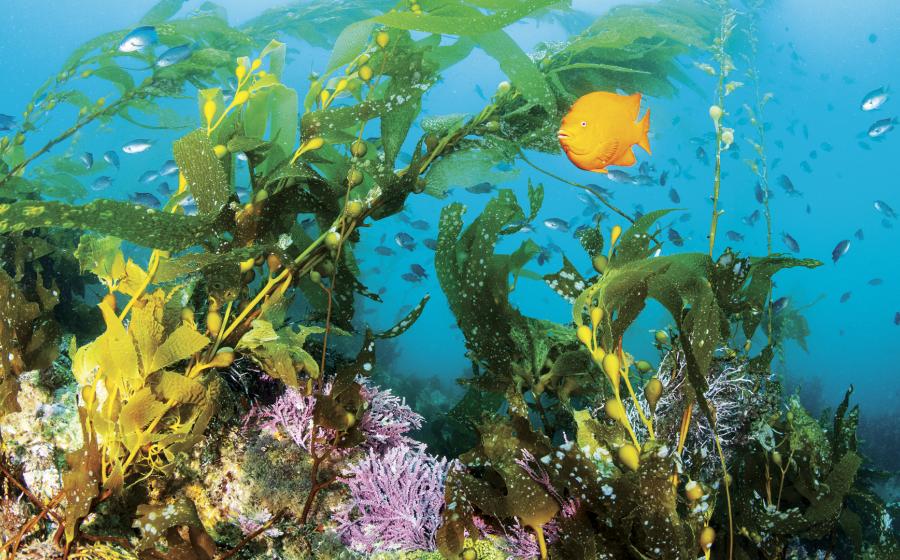8 Best Places to Go Kelp Diving
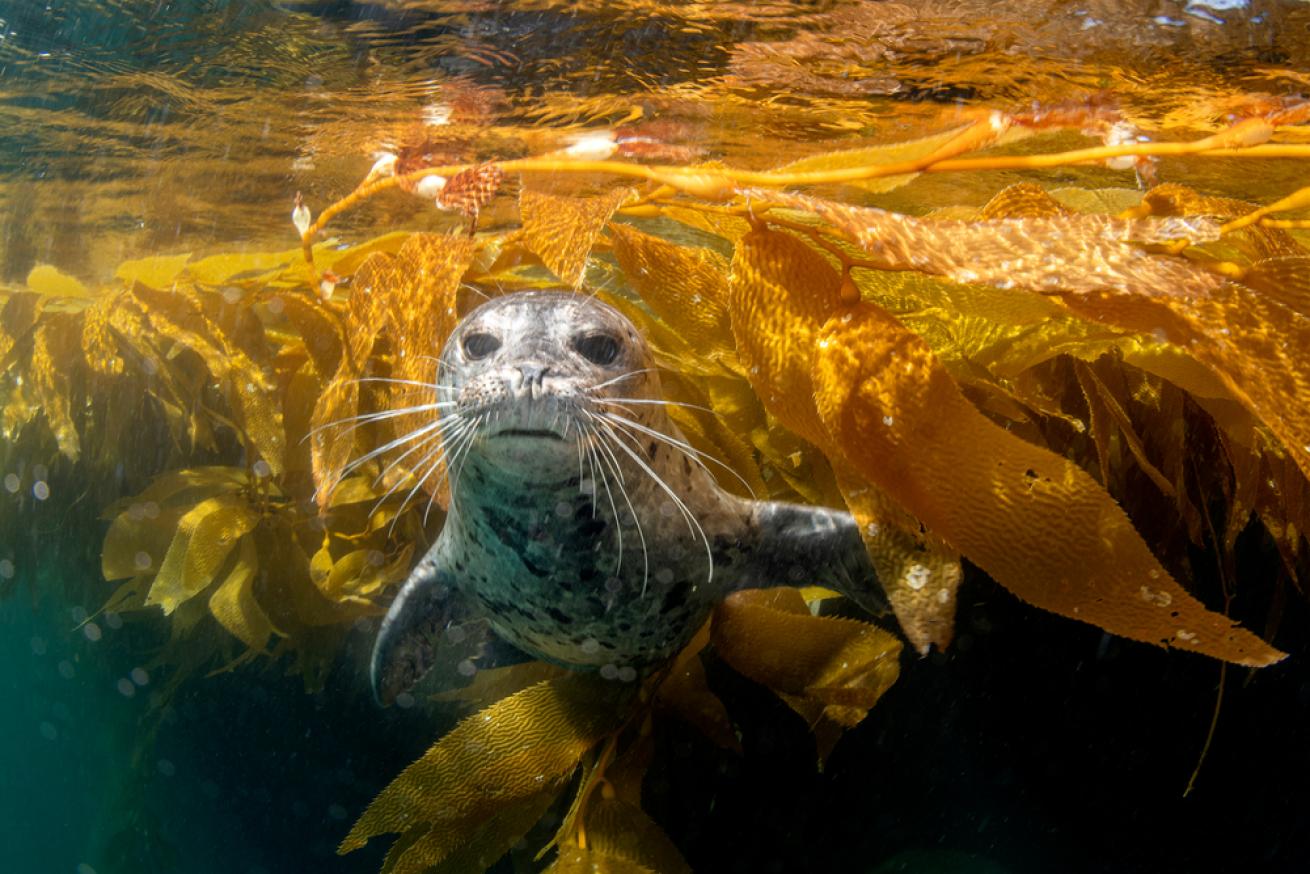
Shutterstock.com/Joe BelangerHarbor seal plays among the kelp forest in California.
Have you ever heard the phrase, “There’s no bad weather, only bad clothing?” Well, the same is true in diving—there’s no cold water, only bad exposure gear. And once you’re properly outfitted, one of the world’s best adventures is available: kelp diving.
That statement might sound dramatic, but it’s true. Coral reefs are wonderful, but being ensconced in a kelp forest never fails to make my heart skip a beat. Encountering coldwater fauna—from sea lions to fried egg jellyfish—always makes the extra layers worth it.
If kelp also gets your blood pumping, here are eight destinations to add to your log book.
1. California
Underwater jungles unfurl along the California coastline. Cities like San Diego and Monterey offer shore diving access, while the Channel Islands beckon with offshore adventures.
Wherever you go, you’ll plunge into a world of cool mystery where sunlight filters through the kelp canopy overhead, offering glimpses of the vibrant cast. Garibaldi—the state fish—flashes its fiery orange brilliance. Lithe sea lions and harbor seals weave through the kelp, their barks a muffled echo. Kelp bass and rockfish dart in the amber fronds, while the lucky few might encounter a leopard shark or abalone slinking along the bottom.
You can dive year-round with the right equipment (7 mm or drysuit). Visibility dances between 10 and 50 feet, with water temps running from 50 to 70 degrees F depending on the time of year and latitude. Water temperatures are generally the most comfortable in the late summer and early fall.
2. British Columbia, Canada
British Columbia throws down the gauntlet for cold-water divers. Here, kelp forests fringe Vancouver Island, their swaying fronds reaching toward a sometimes-murky surface where visibility ranges from 10 to 50 feet. Temperatures hover between a bracing 45 to 55 degrees F, demanding a good dry suit.
What the water lacks in clarity, it makes up for in sheer, untamed wilderness. Giant Pacific octopus unfurl their mesmerizing intelligence. Wolf eels, serpentine and prehistoric, lurk in the kelp. Lingcod, the local ambush predator, waits with steely eyes. And then there are the stars of the show: Steller sea lions, playful and enormous, bark greetings.
Related Readings : 5 Best Dive Sites on Oregon’s South Coast
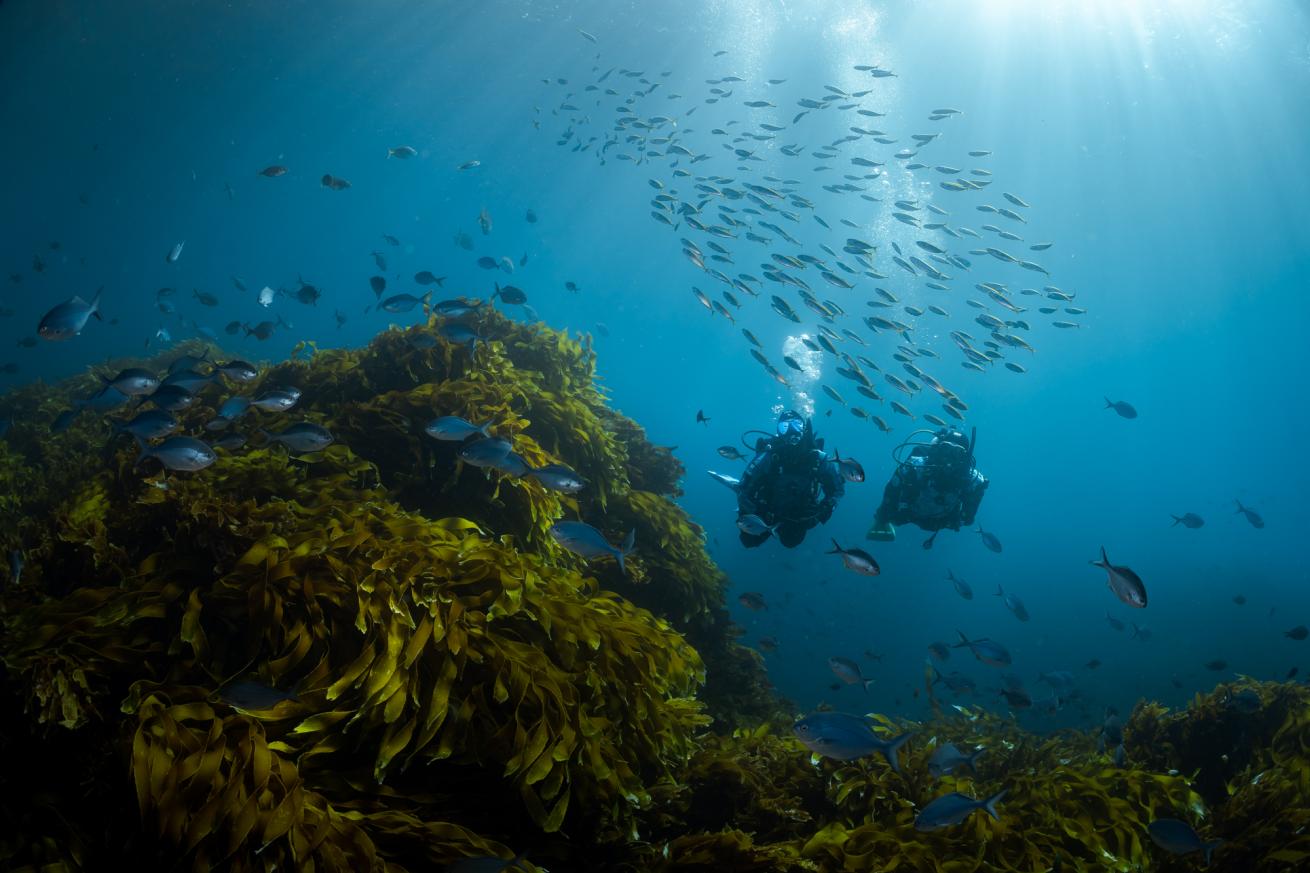
Jay CluePoor Knights Islans, New Zealand
3. Poor Knights Islands, New Zealand
New Zealand throws open a cathedral of kelp. Sunlight spears through the impossibly clear water (think 50 to 100-plus feet visibility), illuminating forests that range from towering walls to undulating gardens blanketing the seabed.
At Poor Knights Islands, divers are pilgrims in an otherworldly realm. Schools of snapper and kingfish weave through the kelp fronds, while the sapphire flash of a blue maomao might catch the eye. Patient explorers can find mosaic eels camouflaged within the kelp holdfasts or witness the silent ballet of nudibranchs.
The real magic lies in the open water: Dolphins, orcas and even whales are known to grace divers with their presence, making New Zealand kelp diving an unforgettable dance with marine giants. Year-round diving is possible (with temps ranging from 55 to 72 degrees F), but summer offers the warmest water, influenced by subtropical currents.
4. Western Cape, South Africa
South Africa's Western Cape defines cold and thrilling. Kelp forests near Cape Town shimmer in shades of jade, a refuge for a surprising cast of characters. Visibility dances between 15 and 50 feet, allowing divers to spot playful seals, hypnotic cow sharks and the many-limbed walk of the octopus. Keep an eye out for the bursts of color that are nudibranchs, miniature marvels of evolution. Those with keen eyes might spot the flash of a rock lobster, a prized inhabitant of these underwater havens.
And it doesn’t stop here: Drama ramps out in the blue. During migrations, whales breach the surface, a breathtaking display of power. The lucky few might even encounter the prehistoric leviathan of the deep, the sevengill shark—a true baptism by adrenaline.
5. Tasmania, Australia
Kelp forests sway in a haunting ballet along Tasmania’s east and southeast coasts. Divers are rewarded with weedy seadragons, their leafy camouflage a testament to evolution's artistry. Crayfish scuttle across the seabed, while handfish, with their bizarre hand-like fins, hug the bottom like living oddities. Large, smooth rays glide through the kelp forests, their forms a silent serenity.
The drama extends to the open water. Fur seals zip and zoom, their playful barks echoing through the kelp. And the lucky few might glimpse a whale breaching, a fleeting moment of awe in this underwater realm of the unexpected.
Get a drysuit before plunging into this world of cool clarity—visibility often exceeds 80 feet in water hovering between 45 and 65 degrees F.
6. Baja California, Mexico
Northern Baja California unfurls a living tapestry beneath the waves. Kelp forests fringe the Pacific coast, particularly around the Coronado Islands located just 18 miles from San Diego, their grassy strands swaying in the current. Here, divers are greeted by balmy water temperatures, ranging from 55 to 75 degrees F, and visibility that can stretch to a luxurious 70 feet in the right conditions.
Playful sea lions torpedo through the kelp, their barking calls a rhythmic counterpoint to the diver's exhale. Garibaldi, ablaze in their signature orange, dart between the fronds, adding a fiery spark to the scene.
For those with keen eyes, the bottom reveals the alien grace of horn sharks, their snouts tipped with a bioluminescent glow. Bat rays, all elegant mystery, flit across the sandy bottom, their wing-like forms a fleeting glimpse of serenity.
Related Readings : How Spore Banks Can Save Kelp
7. Japan
Japan's kelp diving is an immersion in a pristine underwater world, where nature's choreography unfolds in cool, unbroken silence. Divers plunge into the chilly waters off Hokkaido and the northern Honshu coasts, where visibility can extend to 60 feet or more and sunlight filters through the kelp canopy, dappling a world teeming with life.
Schools of colorful fish flit all around. Octopus, masters of disguise, weave their eight-limbed magic among the swaying fronds. Divers also have the chance to encounter playful barking seals. And for the truly fortunate, a glimpse of a sea otter, the charismatic icon of the kelp forests.
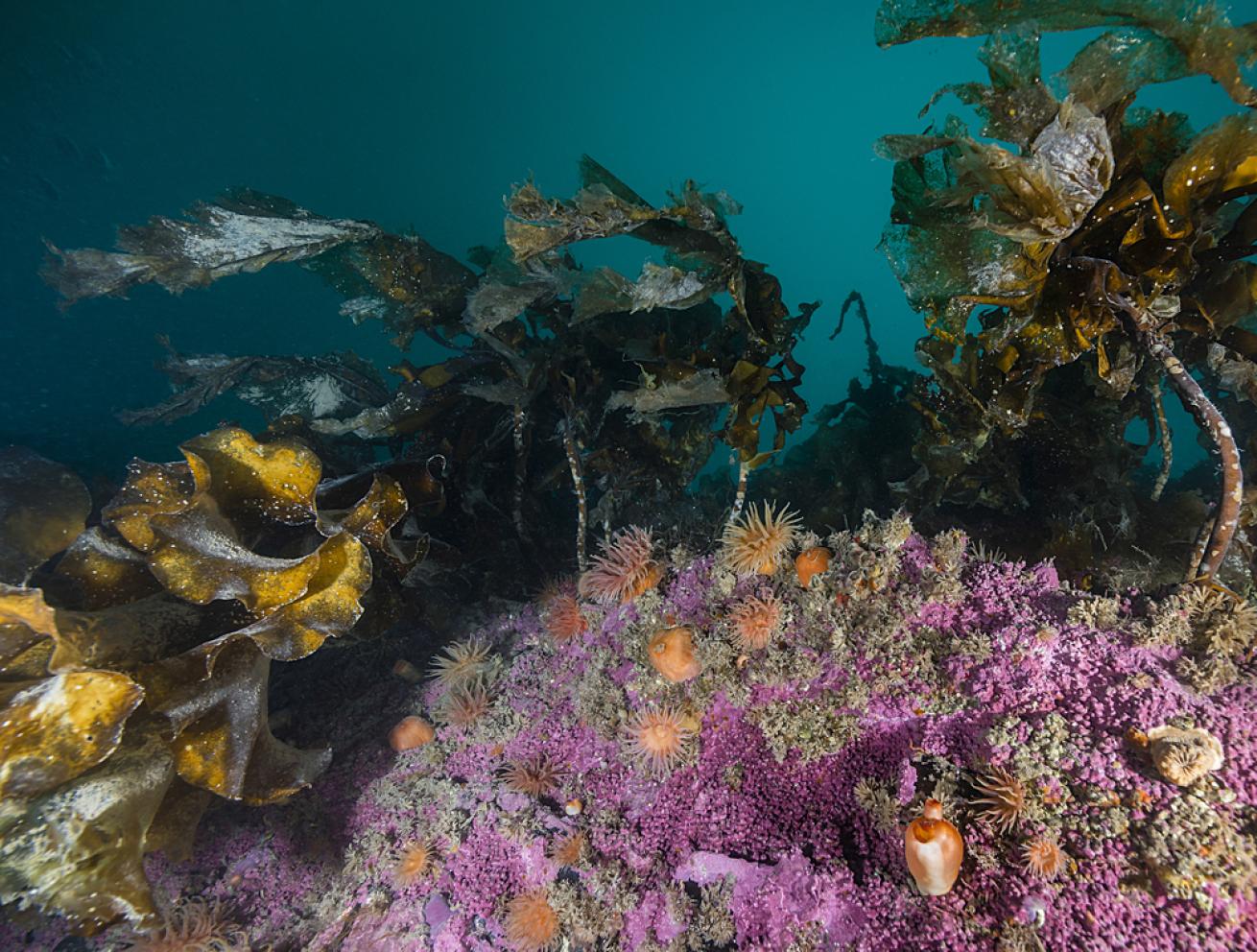
Shutterstock.com/wildestanimalCold water kelp and anemones provide a stunning scenery in Svalbard, Norway.
8. Norway
You’ll dive into emerald twilight when you submerge in Norway. Fringing the southern and western coastline, these underwater jungles offer divers a glimpse of a world sculpted by cold and light. Visibility can pierce the depths to 60 feet or more, revealing a stage set in cool tones.
Sunlight filters through the kelp canopy, shining spotlights on the fronds of seaweed and the vibrant bodies of anemones clinging to the rock walls. Schools of pollock shimmer like living coins, and the occasional jellyfish drifts by, a spectral reminder of the ocean's silent power.
Water temperatures hover between a bracing 40 to 60 degrees F, demanding a good drysuit. The true prize here isn't the flamboyant: It's the possibility of encountering a pod of orcas, especially during the winter herring run. Even a single sighting of these powerful hunters slicing through the kelp is an unforgettable encounter, a moment where the wild heart of the ocean beats a little closer.

